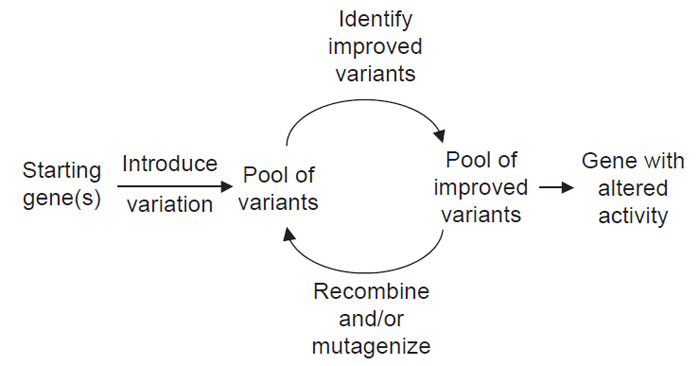Practical Considerations for Engineering Enzymes
Over the last decade or so, enzyme engineers have developed strategies for creating variant tailored enzymes that are collectively referred to as directed evolution (Arnold, 1998). These combinatorial methods used to alter specific properties of enzymes have resulted in remarkable improvements in enzyme activity for specific substrates (Stemmer, 1994b; Whittle et al., 2001), reversal of enantioselectivity (Reetz et al., 1997), as well as changes in global properties such as solvent (You and Arnold, 1996) and heat (Zhao and Arnold, 1999) tolerance (see also several excellent reviews Farinas et al., 2001; Powell et al., 2001).There are four key steps to engineering a desired enzyme activity successfully: (1) identification of parental enzymes to be modified, (2) introducing variation into the gene(s), (3) choice of host system to express the enzyme, and (4) method for identifying improvements in property of interest. See Fig. 2.4 for a generic scheme for altering the properties of an enzyme.
 |
| FIGURE 2.4 Generic scheme for directed evolution of an enzyme. |




